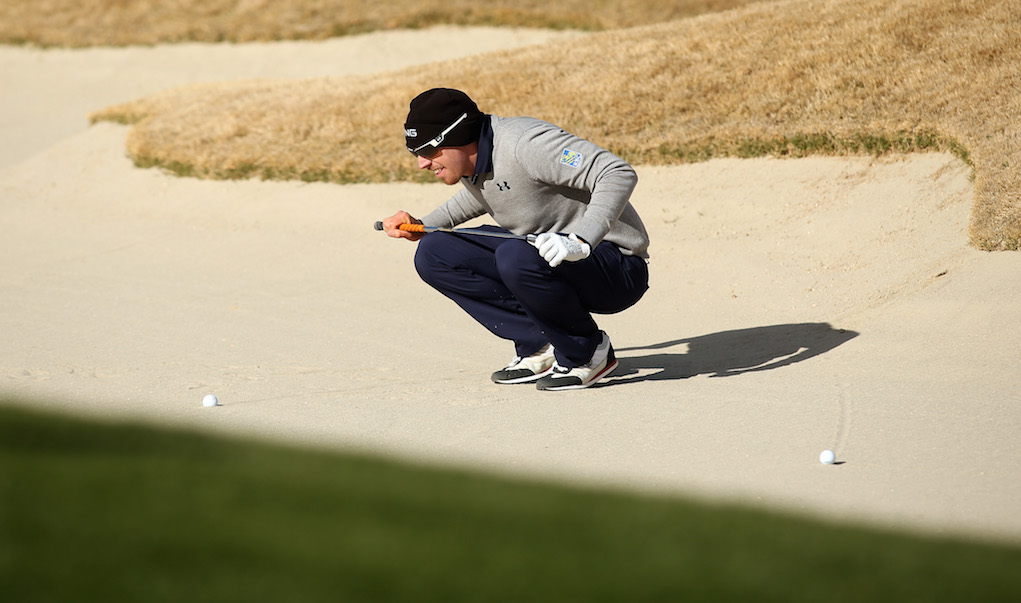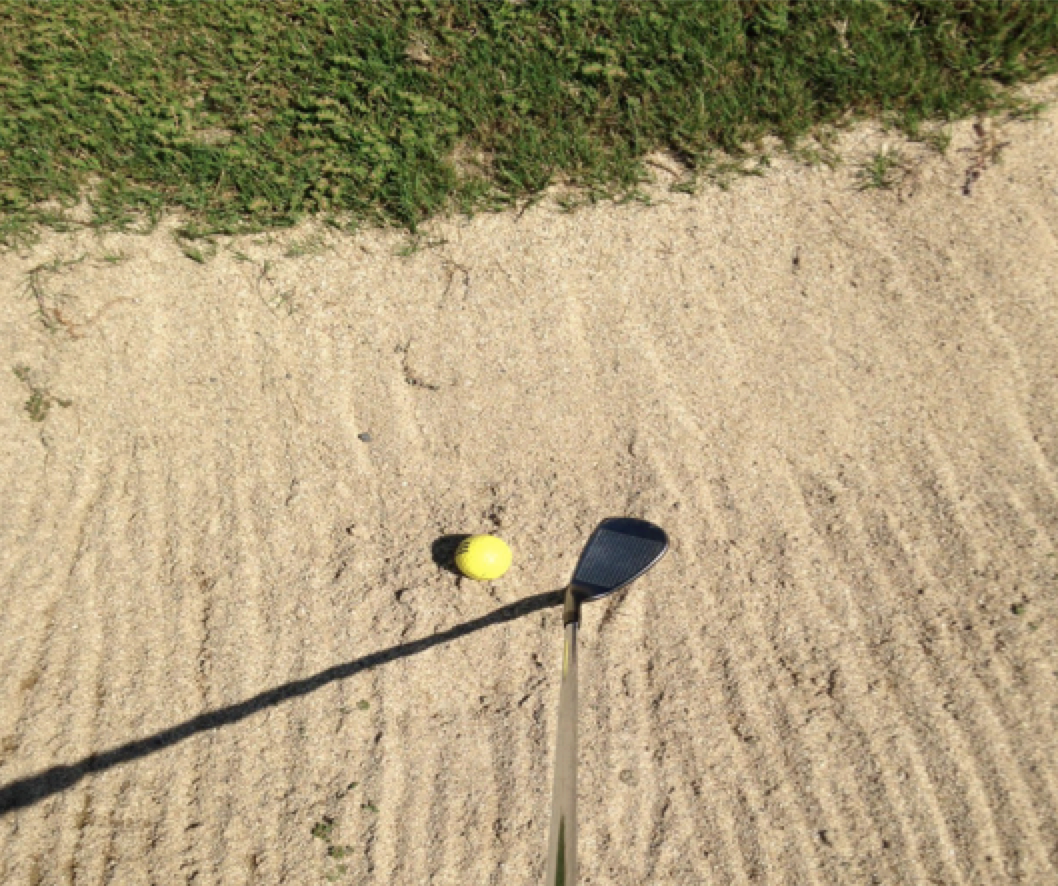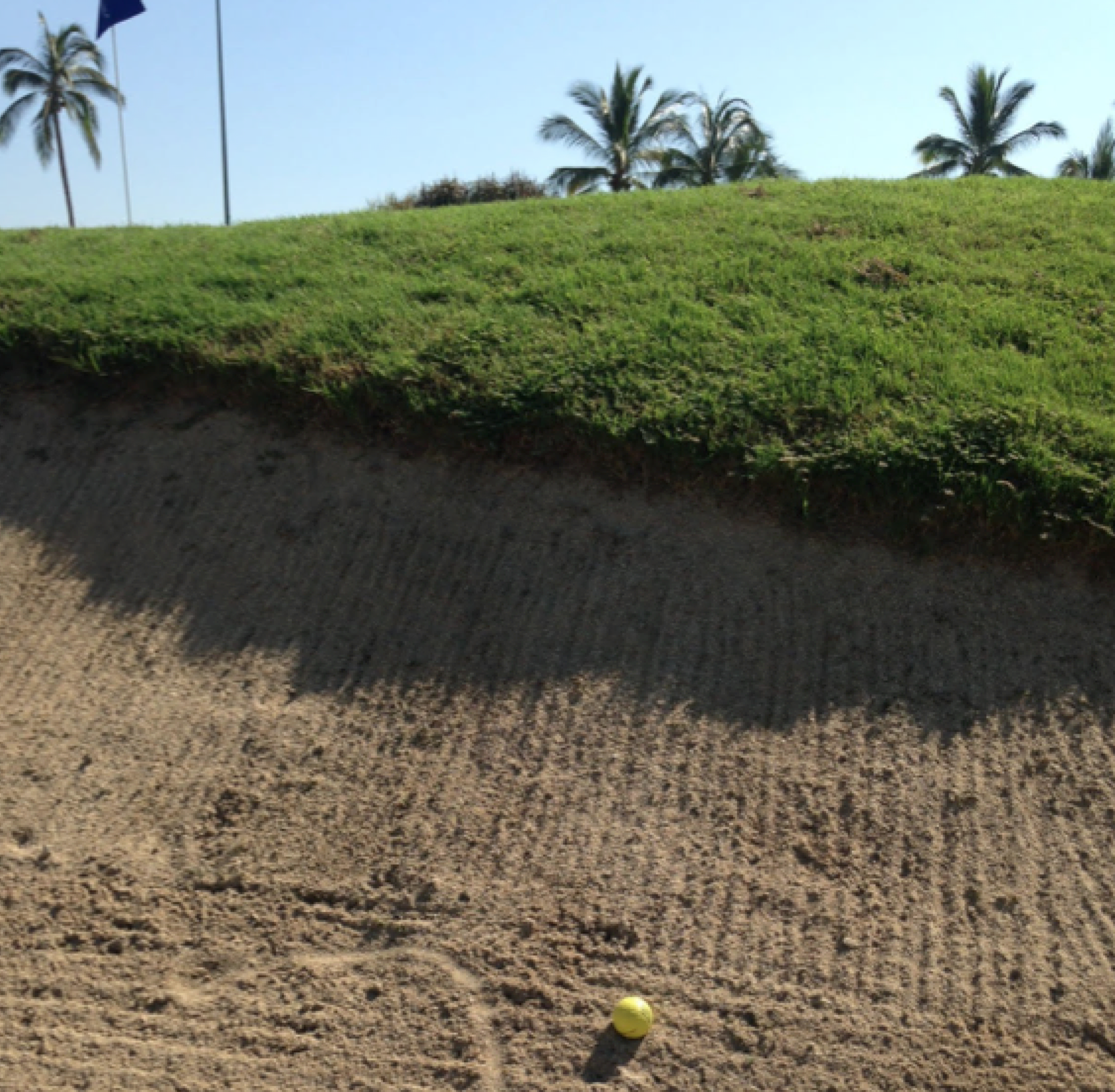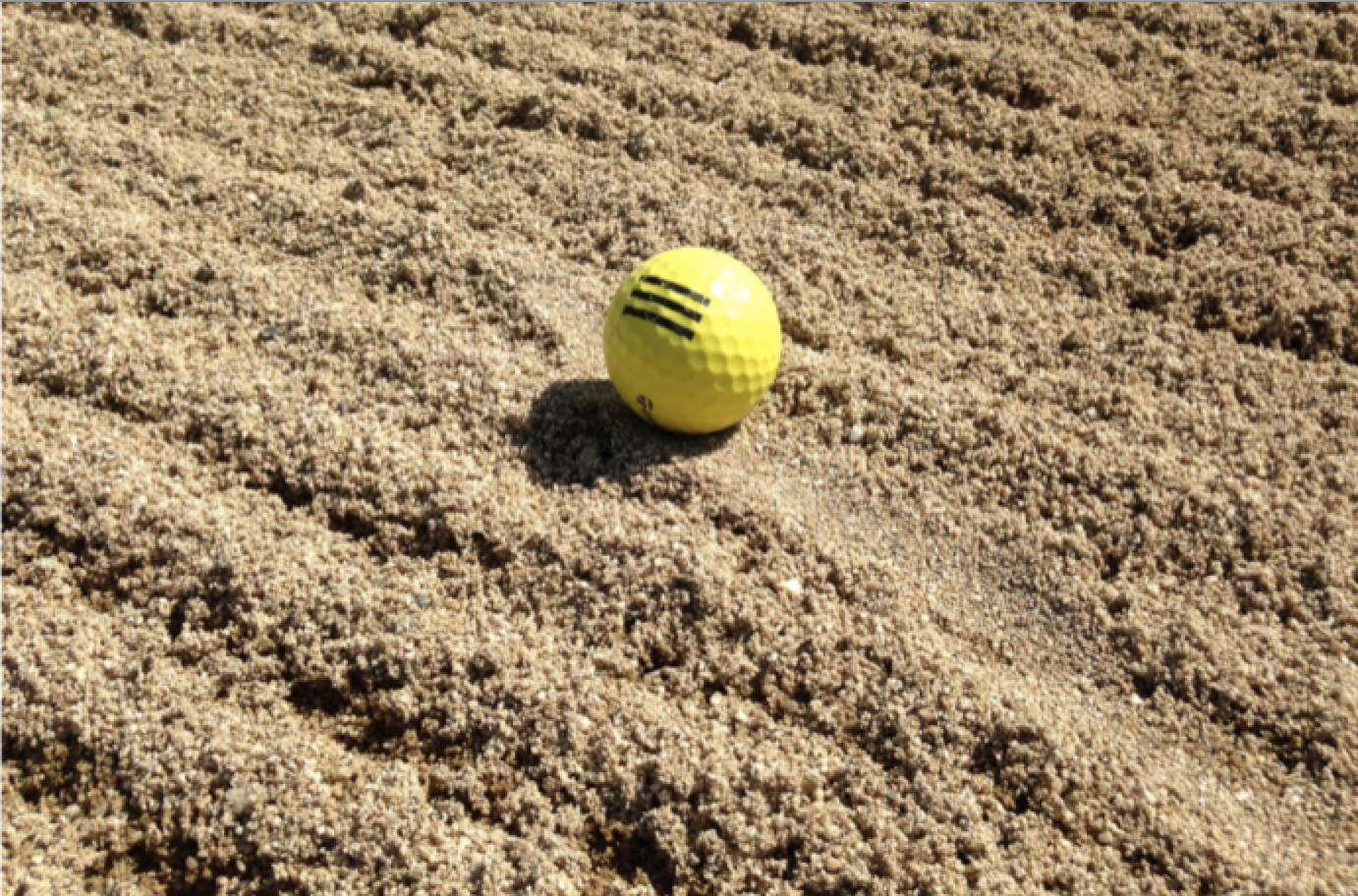Instruction
How to analyze your lie in a greenside bunker

There’s a lot written about the proper bunker shot technique — you know, open your face and stance, and thump the sand — but that’s only half the battle. There’s more to being a good bunker player than just the standard technique; you also need to be able to play the ball from various lies in the sand, each of which requires slight adjustments.
This is GolfWRX, so I know the majority of you know how to play from a good lie in the bunker — and most of you also know how to play from a plugged lie, too. That’s why I’m skipping those topics in this article. What I do want to explain is how to play from a few uncommon lies in the bunker. Over and over again, I see even really good golfers fail to make the proper adjustments to hit these shots.
Related
- Adjust your setup and swing for better bunker shots
- How to hit a bunker shot, as analyzed on Trackman
Below are four lies that most golfers NEVER seem to get up and down. Hopefully, after you read this article you’ll join the select group of golfers who do.
1) The Downhill Lie
The best way to handle this lie is to lean your body with the slope, set the club up quickly and hit down and through the ball with a low finish. The ball will come out low and hot, so be prepared for it to run after it lands.
You may be able to get the ball to stop if the lip isn’t too invasive to your backswing, as shown above. But if the lip is higher and you really have to pick the club up quickly on the backswing, just know that the ball will come out scooting with very little spin. Think bunny slope (slight lip), versus a double black diamond (steep lip).
Sometimes with a steep lip, it’s better to cut your losses and aim for the fat part of the green. From this kind of lie, the goal is to have a putter in your hand on the next shot, not a wedge.
2) The Uphill-Sidehill Lie
 This is my least favorite lie in the bunker. It’s just so difficult to predict how the ball will come out since there’s usually more sand in the face of the bunker than there is in the middle of it. The extra sand makes it more difficult for you to get the clubhead through the sand without the heel “dragging” and closing the face prematurely.
This is my least favorite lie in the bunker. It’s just so difficult to predict how the ball will come out since there’s usually more sand in the face of the bunker than there is in the middle of it. The extra sand makes it more difficult for you to get the clubhead through the sand without the heel “dragging” and closing the face prematurely.
There is nothing like the feel of a chunked heel-drag, forcing the ball to shoot way left of your target. The best thing here is to make sure your wedges have some type of heel and toe relief. You can either buy them that way, or take your wedges to a certified clubmaker if there’s one in your area. I always suggest this type of grind for golfers who tend to open the club a lot around the greens.
If you don’t have a heel grind on your wedges, you must practice this lie from various densities of sand to understand how the ball will come out. There’s two factors at play with this shot:
- The steepness of the slope itself.
- The amount of sand on the slope.
Try to estimate the slope and sand density on a scale of 1-10, and then make the proper adjustments. Do NOT assume all side-hill lies are created equal. But either way, most of the time you’ll catch too much sand and the ball will come out left, so plan for it.
3) The Uphill Lie

Here’s a fairly common uphill lie with the lip well above the ball. Surely at some point in your golfing life you’ve been told to lean backwards with the slope and swing harder, as the ball will tend to pop way up in the air and won’t get to the hole. Sometimes people tell you to take your 56-degree wedge to compensate. I advocate something different, however, as long the lip is not too high that it impedes the shot.
My thought has always been that if I take a huge swing and the ball shoots way up in the air, I’ve completely lost control of the ball; I can’t determine how it will land or where it will go with any type of consistency.
Instead, I recommend centering your spine or even leaning slightly into the slope with your normal, open-stance, open-face bunker setup. With this adjustment, the ball will tend to release a bit upon landing, having a more predictable roll. The tendency from this lie is to leave the ball short, so the added roll will help.
This will require some experimenting with the degree of forward lean you employ. If you lean too target-ward, you may hit the ball into the lip, and if you don’t adjust enough, the ball will up-shoot as previously discussed. Find the happy medium and you’ll become a master.
4) Sneaky Sitting Down

Looks like your average bunker shot, right? Hold on, look closer. Can you see that the ball is sitting down between rake marks? This type of lie is more common than you think… but you may have never noticed.
Unlike a ball sitting up, this lie necessitates an angle of attack that is a touch more down than your normal shot. A steeper attack angle will ensure that your club moves down and through the shot, not just through the shot. Whenever the ball is sitting down, you must dig deeper for the ball to come out predictably. You don’t want the topography of the sand dictating the reaction of your golf ball, you want as much control as possible.
If you make your normal bunker swing with this lie, it will tend to come off a touch thin, flying past the pin with a bunch of spin. While seeing the ball grab when it lands is good for style points, it often still finishes too far past the pin to count on making a save.
Now that you know what to do, my advice to you is to practice these funky lies in the bunker, and embrace the process of experiment. If you skull a bunch, or leave a bunch in the bunker, who cares! That’s what practice is for, especially in the bunker.
- LIKE56
- LEGIT10
- WOW2
- LOL1
- IDHT2
- FLOP7
- OB0
- SHANK2
Instruction
The Wedge Guy: The easiest-to-learn golf basic

My golf learning began with this simple fact – if you don’t have a fundamentally sound hold on the golf club, it is practically impossible for your body to execute a fundamentally sound golf swing. I’m still a big believer that the golf swing is much easier to execute if you begin with the proper hold on the club.
As you might imagine, I come into contact with hundreds of golfers of all skill levels. And it is very rare to see a good player with a bad hold on the golf club. There are some exceptions, for sure, but they are very few and very far between, and they typically have beat so many balls with their poor grip that they’ve found a way to work around it.
The reality of biophysics is that the body moves only in certain ways – and the particulars of the way you hold the golf club can totally prevent a sound swing motion that allows the club to release properly through the impact zone. The wonderful thing is that anyone can learn how to put a fundamentally sound hold on the golf club, and you can practice it anywhere your hands are not otherwise engaged, like watching TV or just sitting and relaxing.
Whether you prefer an overlap, interlock or full-finger (not baseball!) grip on the club, the same fundamentals apply. Here are the major grip faults I see most often, in the order of the frequency:
Mis-aligned hands
By this I mean that the palms of the two hands are not parallel to each other. Too many golfers have a weak left hand and strong right, or vice versa. The easiest way to learn how to hold the club with your palms aligned properly is to grip a plain wooden ruler or yardstick. It forces the hands to align properly and shows you how that feels. If you grip and re-grip a yardstick several times, then grip a club, you’ll see that the learning curve is almost immediate.
The position of the grip in the upper/left hand
I also observe many golfers who have the butt of the grip too far into the heel pad of the upper hand (the left hand for right-handed players). It’s amazing how much easier it is to release the club through the ball if even 1/4-1/2″ of the butt is beyond the left heel pad. Try this yourself to see what I mean. Swing the club freely with just your left hand and notice the difference in its release from when you hold it at the end of the grip, versus gripping down even a half inch.
To help you really understand how this works, go to the range and hit shots with your five-iron gripped down a full inch to make the club the same length as your seven-iron. You will probably see an amazing shot shape difference, and likely not see as much distance loss as you would expect.
Too much lower (right) hand on the club
It seems like almost all golfers of 8-10 handicap or higher have the club too far into the palm of the lower hand, because that feels “good” if you are trying to control the path of the clubhead to the ball. But the golf swing is not an effort to hit at the ball – it is a swing of the club. The proper hold on the club has the grip underneath the pad at the base of the fingers. This will likely feel “weak” to you — like you cannot control the club like that. EXACTLY. You should not be trying to control the club with your lower/master hand.
Gripping too tightly
Nearly all golfers hold the club too tightly, which tenses up the forearms and prevents a proper release of the club through impact. In order for the club to move back and through properly, you must feel that the club is controlled by the last three fingers of the upper hand, and the middle two fingers of the lower hand. If you engage your thumbs and forefingers in “holding” the club, the result will almost always be a grip that is too tight. Try this for yourself. Hold the club in your upper hand only, and squeeze firmly with just the last three fingers, with the forefinger and thumb off the club entirely. You have good control, but your forearms are not tense. Then begin to squeeze down with your thumb and forefinger and observe the tensing of the entire forearm. This is the way we are made, so the key to preventing tenseness in the arms is to hold the club very lightly with the “pinchers” — the thumbs and forefingers.
So, those are what I believe are the four fundamentals of a good grip. Anyone can learn them in their home or office very quickly. There is no easier way to improve your ball striking consistency and add distance than giving more attention to the way you hold the golf club.
More from the Wedge Guy
- The Wedge Guy: Golf mastery begins with your wedge game
- The Wedge Guy: Why golf is 20 times harder than brain surgery
- The Wedge Guy: Musings on the golf ball rollback
- LIKE86
- LEGIT13
- WOW6
- LOL1
- IDHT0
- FLOP4
- OB1
- SHANK8
Instruction
Clement: Stop ripping off your swing with this drill!

Not the dreaded headcover under the armpit drill! As if your body is defective and can’t function by itself! Have you seen how incredible the human machine is with all the incredible feats of agility all kinds of athletes are accomplishing? You think your body is so defective (the good Lord is laughing his head off at you) that it needs a headcover tucked under the armpit so you can swing like T-Rex?
- LIKE0
- LEGIT2
- WOW2
- LOL0
- IDHT0
- FLOP0
- OB0
- SHANK2
Instruction
How a towel can fix your golf swing

This is a classic drill that has been used for decades. However, the world of marketed training aids has grown so much during that time that this simple practice has been virtually forgotten. Because why teach people how to play golf using everyday items when you can create and sell a product that reinforces the same thing? Nevertheless, I am here to give you helpful advice without running to the nearest Edwin Watts or adding something to your Amazon cart.
For the “scoring clubs,” having a solid connection between the arms and body during the swing, especially through impact, is paramount to creating long-lasting consistency. And keeping that connection throughout the swing helps rotate the shoulders more to generate more power to help you hit it farther. So, how does this drill work, and what will your game benefit from it? Well, let’s get into it.
Setup
You can use this for basic chip shots up to complete swings. I use this with every club in my bag, up to a 9 or 8-iron. It’s natural to create incrementally more separation between the arms and body as you progress up the set. So doing this with a high iron or a wood is not recommended.
While you set up to hit a ball, simply tuck the towel underneath both armpits. The length of the towel will determine how tight it will be across your chest but don’t make it so loose that it gets in the way of your vision. After both sides are tucked, make some focused swings, keeping both arms firmly connected to the body during the backswing and follow through. (Note: It’s normal to lose connection on your lead arm during your finishing pose.) When you’re ready, put a ball in the way of those swings and get to work.

Get a Better Shoulder Turn
Many of us struggle to have proper shoulder rotation in our golf swing, especially during long layoffs. Making a swing that is all arms and no shoulders is a surefire way to have less control with wedges and less distance with full swings. Notice how I can get in a similar-looking position in both 60° wedge photos. However, one is weak and uncontrollable, while the other is strong and connected. One allows me to use my larger muscles to create my swing, and one doesn’t. The follow-through is another critical point where having a good connection, as well as solid shoulder rotation, is a must. This drill is great for those who tend to have a “chicken wing” form in their lead arm, which happens when it becomes separated from the body through impact.
In full swings, getting your shoulders to rotate in your golf swing is a great way to reinforce proper weight distribution. If your swing is all arms, it’s much harder to get your weight to naturally shift to the inside part of your trail foot in the backswing. Sure, you could make the mistake of “sliding” to get weight on your back foot, but that doesn’t fix the issue. You must turn into your trial leg to generate power. Additionally, look at the difference in separation between my hands and my head in the 8-iron examples. The green picture has more separation and has my hands lower. This will help me lessen my angle of attack and make it easier to hit the inside part of the golf ball, rather than the over-the-top move that the other picture produces.


Stay Better Connected in the Backswing
When you don’t keep everything in your upper body working as one, getting to a good spot at the top of your swing is very hard to do. It would take impeccable timing along with great hand-eye coordination to hit quality shots with any sort of regularity if the arms are working separately from the body.
Notice in the red pictures of both my 60-degree wedge and 8-iron how high my hands are and the fact you can clearly see my shoulder through the gap in my arms. That has happened because the right arm, just above my elbow, has become totally disconnected from my body. That separation causes me to lift my hands as well as lose some of the extension in my left arm. This has been corrected in the green pictures by using this drill to reinforce that connection. It will also make you focus on keeping the lead arm close to your body as well. Because the moment either one loses that relationship, the towel falls.


Conclusion
I have been diligent this year in finding a few drills that target some of the issues that plague my golf game; either by simply forgetting fundamental things or by coming to terms with the faults that have bitten me my whole career. I have found that having a few drills to fall back on to reinforce certain feelings helps me find my game a little easier, and the “towel drill” is most definitely one of them.
- LIKE12
- LEGIT2
- WOW2
- LOL0
- IDHT0
- FLOP2
- OB0
- SHANK8
-

 19th Hole1 week ago
19th Hole1 week agoDave Portnoy places monstrous outright bet for the 2024 Masters
-

 19th Hole3 weeks ago
19th Hole3 weeks agoThings got heated at the Houston Open between Tony Finau and Alejandro Tosti. Here’s why
-

 19th Hole2 weeks ago
19th Hole2 weeks agoTiger Woods arrives at 2024 Masters equipped with a putter that may surprise you
-

 19th Hole2 weeks ago
19th Hole2 weeks agoReport: Tiger Woods has ‘eliminated sex’ in preparation for the 2024 Masters
-

 19th Hole6 days ago
19th Hole6 days agoTwo star names reportedly blanked Jon Rahm all week at the Masters
-

 19th Hole5 days ago
19th Hole5 days agoNeal Shipley presser ends in awkward fashion after reporter claims Tiger handed him note on 8th fairway
-

 19th Hole4 days ago
19th Hole4 days agoReport: LIV Golf identifies latest star name they hope to sign to breakaway tour
-

 19th Hole3 weeks ago
19th Hole3 weeks agoAddiction, spinal fusion, and scam artists – Everything Anthony Kim revealed in candid interview with David Feherty















Dave R
Nov 19, 2016 at 8:12 pm
Thanks Dale good read makes sense .
SV
Nov 18, 2016 at 9:05 am
What I would like to know is how to play a bunker shot when there is “no” sand in the bunker; the type where it feels like there is sand and when you swing the club hits concrete. How do you determine this and how do you play it?
Dale Doback
Nov 19, 2016 at 11:48 am
I get this type of bunker a lot in Palm Springs especially out of season when courses do minimal maintenance after the snowbirds leave. The best way to check what lies beneath the surface is digging in your feet and feeling the resistance and seeing how deep your feet settle in when you build your stance. That’s also a good time to check the sand density and wetness or dryness below the surface. Any wetness in the sand will cause the club to bounce more. Once the concrete is suspected beneath the ball there are a couple options. assuming your normal bunker technique will bounce into the ball from what you described in your post the reason is it’s to shallow of a path bottoming out to soon behind the ball and the club is simply doing what it was designed to do. I have found moving the ball back in my stance a little allows me to drive down and under the ball and I also square up the face. Not necessarily totally square it depends on the lie and the trajectory needed for the shot. If you have to get the ball to spin and need more trajectory because you have little room to the pin then what I do is keep the ball back about 1 ball width in my stance, open the face about 45 degrees depending on surface texture. I get a little more weight on my front foot and keep it there about 80/20 because I want to get steeper with my path. My normal strike is about 2.5 to 3 inches from the ball with the face open and firm sand, I now have to about 1 to 1.5 inches behind the driving the open face under the ball before the bounce kicks the club back up. This shot is very dangerous. I hope I explained that well. The under lying concrete bunker gave me the yips for a couple years when I first moved to the desert from washingtons soft fluffy sand bunkers.